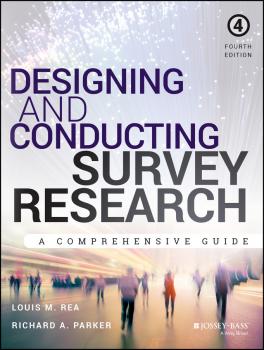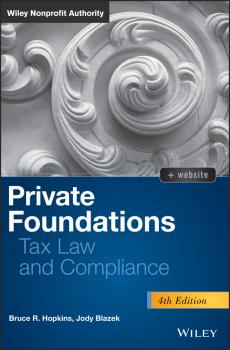ТОП просматриваемых книг сайта:
Политика, политология
Различные книги в жанре Политика, политология, доступные для чтения и скачиванияАннотация
The leading program evaluation reference, updated with the latest tools and techniques The Handbook of Practical Program Evaluation provides tools for managers and evaluators to address questions about the performance of public and nonprofit programs. Neatly integrating authoritative, high-level information with practicality and readability, this guide gives you the tools and processes you need to analyze your program's operations and outcomes more accurately. This new fourth edition has been thoroughly updated and revised, with new coverage of the latest evaluation methods, including: Culturally responsive evaluation Adopting designs and tools to evaluate multi-service community change programs Using role playing to collect data Using cognitive interviewing to pre-test surveys Coding qualitative data You'll discover robust analysis methods that produce a more accurate picture of program results, and learn how to trace causality back to the source to see how much of the outcome can be directly attributed to the program. Written by award-winning experts at the top of the field, this book also contains contributions from the leading evaluation authorities among academics and practitioners to provide the most comprehensive, up-to-date reference on the topic. Valid and reliable data constitute the bedrock of accurate analysis, and since funding relies more heavily on program analysis than ever before, you cannot afford to rely on weak or outdated methods. This book gives you expert insight and leading edge tools that help you paint a more accurate picture of your program's processes and results, including: Obtaining valid, reliable, and credible performance data Engaging and working with stakeholders to design valuable evaluations and performance monitoring systems Assessing program outcomes and tracing desired outcomes to program activities Providing robust analyses of both quantitative and qualitative data Governmental bodies, foundations, individual donors, and other funding bodies are increasingly demanding information on the use of program funds and program results. The Handbook of Practical Program Evaluation shows you how to collect and present valid and reliable data about programs.
Аннотация
Globalised Minds, Roots in the City utilises empirical evidence from four European cities to explore the role of urban upper middle classes in the transformations experienced by contemporary European societies. Presents new empirical evidence collected through an original comparative research about professionals and managers in four European cities in three countries Features an innovative combination of approaches, methods, and techniques in its analyses of European post-national societies Reveals how segments of Europe’s urban population are adopting “exit” or “partial exit” strategies in respect to the nation state Utilises approaches from classic urban sociology, globalization and mobility studies, and spatial class analysis Includes in depth interviews, social networking techniques, and classic questions of political representation and values
Аннотация
A unique approach to policy implementation with essential guidance and useful tools Effective Implementation in Practice: Integrating Public Policy and Management presents an instrumental approach to implementation analysis. By spanningpolicy fields, organizations, and frontline conditions in implementation systems, this book provides a robust foundation for policy makers, public and nonprofit managers and leaders. Detailed case studies enable readers to identify key intervention points, become more strategic, and improve outcomes. The engaging style and specific examples provide a bridge to practice, while diagrams, worksheets, and other tools included in the appendix help managers apply these ideas to team meetings, operational planning, and program assessment and refinement. Policy and program implementation is fraught with challenges as public and nonprofit leaders juggle organizational missions and stakeholder expectations while managing policy and program impact and effectiveness. Using their own experience in practice, teaching, and research, the authors empower policy and program implementers to recognize their essential roles within the workplace and help them cultivate the analytical and social skills necessary to change. Understand how program or policy technology constitutes the core of implementation Study a conceptual framework encompassing power dynamics, culture, relationships in the field and the rules that are operating during program and policy implementation Discover a multilevel approach that identifies key points of strategic action at various levels and settings of the implementation system and assesses implementation success The integration of policy and management mindsets gives readers an insightful yet accessible understanding of implementation, allowing them to achieve the potent results desired by the public. For those in senior positions at federal agencies to local staff at nonprofit organizations, Effective Implementation in Practice: Integrating Public Policy and Management provides an invaluable one-stop resource.
Аннотация
A comprehensive and practical guide to security organization and planning in industrial plants Features Basic definitions related to plant security Features Countermeasures and response methods Features Facilities and equipment, and security organization Topics covered are applicable to multiple types of industrial plants Illustrates practical techniques for assessing and evaluating financial and corporate risks
Аннотация
Gives readers a detailed understanding of how specific biological weapons work and how those affected by the weapons would be treated Teaches the reader to recognize the symptoms of each biological weapon and understand the threat these weapons pose Concentrates on the weapons considered the greatest threats by the CDC such as Anthrax, Botulism, Smallpox, Ricin toxin, Ebola, Plague, and Viral encephalitis Provides a detailed understanding of how specific biological weapons work and how to recognize the symptoms of those affected by the weapons as well as how they would be treated Includes case studies, chapter review questions, and the instructor’s supplemental materials include PowerPoint presentations, a Test Bank, and suggestions for student projects Begins with a primer on microbiology, the human immune system’s response to these biological agents, and the defense agencies involved with protecting the public against these agents
Аннотация
The industry standard guide, updated with new ideas and SPSS analysis techniques Designing and Conducting Survey Research: A Comprehensive Guide Fourth Edition is the industry standard resource that covers all major components of the survey process, updated to include new data analysis techniques and SPSS procedures with sample data sets online. The book offers practical, actionable guidance on constructing the instrument, administrating the process, and analyzing and reporting the results, providing extensive examples and worksheets that demonstrate the appropriate use of survey and data techniques. By clarifying complex statistical concepts and modern analysis methods, this guide enables readers to conduct a survey research project from initial focus concept to the final report. Public and nonprofit managers with survey research responsibilities need to stay up-to-date on the latest methods, techniques, and best practices for optimal data collection, analysis, and reporting. Designing and Conducting Survey Research is a complete resource, answering the «what», «why», and «how» every step of the way, and providing the latest information about technological advancements in data analysis. The updated fourth edition contains step-by-step SPSS data entry and analysis procedures, as well as SPSS examples throughout the text, using real data sets from real-world studies. Other new information includes topics like: Nonresponse error/bias Ethical concerns and special populations Cell phone samples in telephone surveys Subsample screening and complex skip patterns The fourth edition also contains new information on the growing importance of focus groups, and places a special emphasis on data quality including size and variability. Those who employ survey research methods will find that Designing and Conducting Survey Research contains all the information needed to better design, conduct, and analyze a more effective survey.
Аннотация
A comprehensive text on the theory and practice of public participation Written by two leaders in the field, Public Participation for 21st Century Democracy explores the theory and practice of public participation in decision-making and problem-solving. It examines how public participation developed over time to include myriad thick, thin, and conventional opportunities, occurring in both face-to-face meetings and online settings. The book explores the use of participation in various arenas, including education, health, land use, and state and federal government. It offers a practical framework for thinking about how to engage citizens effectively, and clear explanations of participation scenarios, tactics, and designs. Finally, the book provides a sensible approach for reshaping our participation infrastructure to meet the needs of public officials and citizens. The book is filled with illustrative examples of innovative participatory activities, and numerous sources for more information. This important text puts the spotlight on the need for long-term, cross-sector, participation planning, and provides guidance for leaders, citizens, activists, and others who are determined to improve the ways that participation and democracy function. Public Participation for 21st Century Democracy: Helps students and practitioners understand the history, theory, and practice of public participation Contains a wealth of case studies that explore the application of public participation in different settings Covers vital issues such as education, health, land use, and state and federal government Has accompanying instructor resources, such as PowerPoint slides, discussion questions, sample assignments, case studies and research from www.participedia.net, and classroom activities.
Contracting-out Welfare Services. Comparing National Policy Designs for Unemployment Assistance - Mark Considine
Аннотация
Contracting-out Welfare Services focuses on the design and overhaul of welfare-to-work systems around the world in the light of the radical re-design of the welfare system; internationally based authors utilise a national/program case study, considering employment services policy and activation practices. International contributors bring a global comparative perspective to the subject Contributors are all experts in their field, who also draw on a much longer intellectual legacy Uses employment services as a case study to advance understanding in relation to a host of broader principles and concepts Each paper included within the text uses a national/program case study, and each considers employment services policy in general, and activation practices in particular
Аннотация
Stay updated on the latest tax regulations with this private foundation tax manual Knowledge of tax regulations surrounding private foundations isn't enough if you're an executive of such an organization or a professional supporting a tax-exempt foundation. Annual changes to IRS rules and increased scrutiny by regulators mean it's necessary for you to keep abreast of myriad changes that come into existence each year. From authors Bruce R. Hopkins and Jody Blazek comes the definitive guide for those responsible for guiding the financial and tax filing operations of private foundations. The complexity of tax regulations related to private foundations extends to a level that is out of proportion to the relatively small number of such entities. Nonetheless, recent statutory requirements that apply solely to private foundations can make untangling filing and reporting activities overly burdensome without a developed knowledge of the underlying theory and practice. To navigate this maze of add-on regulations, Hopkins and Blazek provide background knowledge, in-depth explanations of regulatory changes, and real-world examples to bring as much simplicity to the process as possible. Receive guidance from the 2007 Outstanding Nonprofit Lawyer Award recipient Learn about the details of private foundation taxes from leading experts in the field Make use of checklists and sample documents to prepare organizational filings Utilize line-by-line instructions for completing exemption applications and forms For professionals working closely with private foundations, including accountants, lawyers, and foundation executives, Private Foundations: Tax Law and Compliance, 4th Edition is a welcome resource for keeping your clients or your organization on the right track. Brings clarity, real-world examples, and checklists to help professionals deal with the burdensome process of complying with IRS regulations governing private foundations Clarifies the underlying logic behind statutory tax regulations governing private foundations and the practical implications of maintaining compliance Supplemented annually online to keep subscribers up-to-date on relevant changes in IRS forms requirements, and related tax procedures Includes easy-to-use checklists highlighting such critical concerns as tax-exempt eligibility and tax compliance Offers line-by-line instructions for completing a variety of exemption applications and tax forms Features sample documents, letters of application, completed forms and practice aids summarizing the differences between public and private charitable organizations
Аннотация
The Matrix Map—a powerful tool for nonprofit strategic decision-making Nonprofit sustainability lies at the intersection of exceptional impact and financial viability. The Sustainability Mindset offers nonprofit professionals and board members a step-by-step guide to move your organization towards this intersection. As outlined in the bestselling book Nonprofit Sustainability, «The Matrix Map» is an accessible framework that combines financial and programmatic goals into an integrated strategy. In this next-step resource, the authors detail a rigorous process to develop a meaningful Matrix Map and engage leadership in setting an organization's strategy. Nonprofits that thrive in today's environment are adaptable with a clear understanding of their impact and business model. This book offers nonprofit boards and staff a framework to do so. Drawing on their in-depth experience, the authors provide an easy-to-follow process complete with tools and templates to help organizations visualize their business model and engage in strategic inquiry. The book provides a variety of illustrative examples to show how the Matrix Map works for all types of organizations. Nonprofit executives and board member are sure to benefit from The Matrix Map analysis. Offers step-by-step guidance for creating a Matrix-Map, a visual representation of an organization's business model Helps organizations assess how each of their programs contributes toward their desired impact and their financial bottom-line. Filled with compelling examples of how The Matrix Map helps nonprofits with strategic decision-making Written by the coauthors of the groundbreaking book Nonprofit Sustainability This comprehensive resource will give any nonprofit the framework they need to make decisions for sustainability and the templates and tools to implement it and help leaders address the challenges inherent in balancing mission impact with financial viability.










